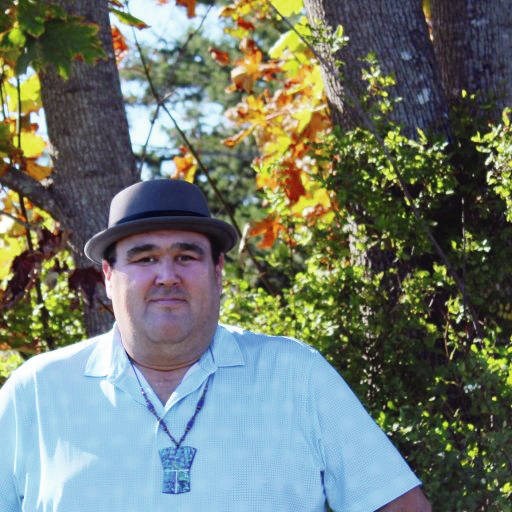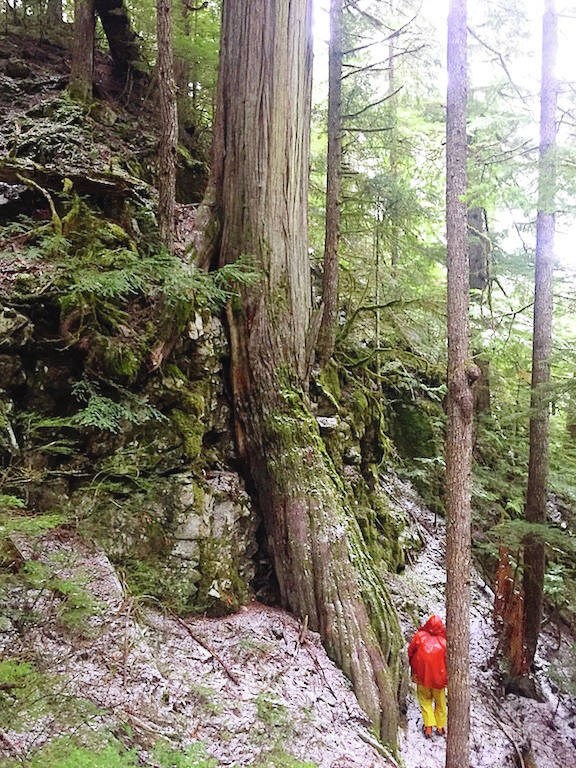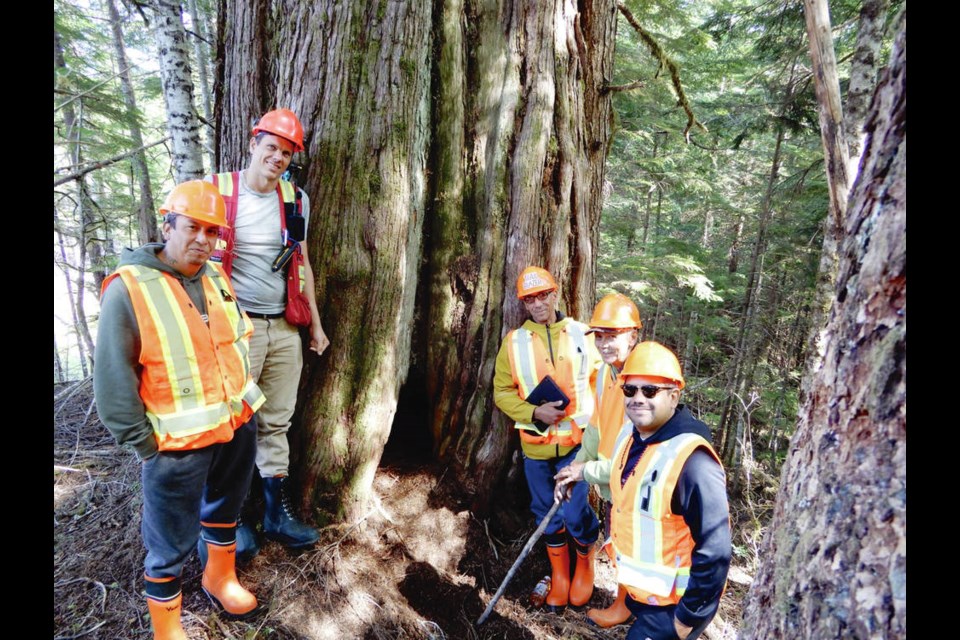First Nations culture along saąúĽĘ´«Ă˝â€™s west coast is rooted in the majestic and monumental cedar tree.
Known as the “Tree of Life,” the cedar has a multitude of uses for coastal peoples, says Nanwakolas Council president Dallas Smith.
But more than a century of industrial old-growth logging has mowed down these forest giants that can live for thousands of years, putting the shared spiritual and cultural well-being of First Nations at risk, Smith said.
A new manner of stewarding ancient, culturally significant trees has been crafted, he said, so old-growth cedars will no longer be valued solely as a commodity, but also for their incalculable cultural worth.
Nanwakolas Council and a number of forestry companies have made a groundbreaking agreement to ensure the monumental sacred trees are protected from logging within members’ traditional territories.
Nanwakolas — a collective of five First Nations stewarding their territorial lands and waters on northeastern Vancouver Island — has established a large cultural cedar operations (LCC) protocol with two forestry companies, Smith said.
For the first time, Western Forest Products and Interfor have agreed to abide by the traditional laws governing the stewardship of wilkw/ k’wa’x tłu (large cultural cedar trees) in council members’ territories, said Smith, adding that more companies are expected to sign on.

“Before, respecting cultural heritage could be a little bit of lip service,” Smith said. “But now we’re saying this matters to us and it’s going to be part of our decision-making paradigm.”
High-quality old-growth red and yellow cedar trees, vital to cultural practices such as carving dugout canoes, totem poles and building traditional big houses, are increasingly difficult to find, Smith said.
“It’s just gotten harder and harder to find the trees of that dimension to build that sort of cultural artifact.”
The new protections for cultural trees are a first step by the council to protect old-growth values in member nations’ traditional territories, Smith said.
“It’s a big deal because [the LCC] is related to our approval process for cutting permits and cutting tenures,” he said. “And if companies aren’t going to play by the rules that we’ve jointly developed … they’re simply not going to have these permits OK’d by us.”
The council is composed of the Mamalilikulla, Tlowitsis, Da’naxda’xw Awaetlala, Wei Wai Kum, and K’ómoks First Nations.
The LCC protocol sets out the operations policies to be followed by logging companies in the First Nations’ combined territories, which cover a terrestrial area of 21,604 square kilometres, said Jordan Benner, Na̲nwak̲olas forestry and research adviser.
Member nations have identified more than 1,000 trees that meet the LCC criteria, said Benner.
However, only five per cent of the combined territory — which includes pockets of private property, young forests and non-forested areas — is likely to have suitable stands of old-growth cedar, Benner said.
Na̲nwak̲olas is continuing to research the distribution and abundance of LCC trees and the environmental conditions where they grow, he said.

Beyond conserving old-growth trees, the new protocol also protects younger stands of cedars, so they can grow larger to support future generations, Benner added.
The LCC protocol provides enhanced protections beyond provincial old-growth policy, Benner added.
Cultural cedars are identified by a set of criteria beyond size — such as the quality, health and shape of the tree — that were established by First Nations carvers, Benner said.
Any red or yellow cedars greater than 100 centimetres in diameter with potential as LCC trees could trigger a survey by the First Nation.
And if it’s determined to be an LCC, a tree measuring 150 centimetres or greater in diameter and beyond 12 metres in length would be off-limits for logging.
saąúĽĘ´«Ă˝â€™s new Special Tree regulations in the coastal biogeoclimatic zone protect only red cedars 385 centimetres in diameter or higher, and yellow cedars 265 centimetres across and bigger.
“So [the LCC protocol] is capturing a lot of … smaller trees than the provincial big tree policy, as long as they meet other characteristics as well,” Benner said. “We’re also setting out rules for how First Nations can more equitably access these trees from the bush as well.”
Big cedars have been targeted by the forest sector for a long time for their big timber values, he added.
A tree might be several centuries old before it can be used for a large canoe or big house, yet industrial forestry rotations are typically less than 100 years, Benner said. “Now, First Nations have more certainty that a specific level of these trees will be considered for current and future generations.”
The protocol also outlines other forestry issues, such as bear-den protection, habitat restoration and stewardship around salmon streams, Smith said.
The protocol better protects culturally important activities and the environment, but won’t eliminate the economic benefits associated with forests, he added.
“But the protocol is really the tip of the iceberg. We’re going to start bringing forward more and more cultural protection for our lands and resources.”



